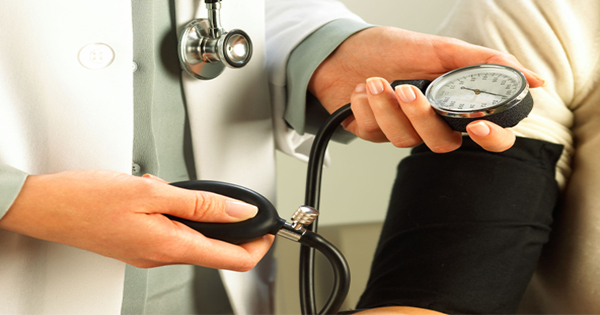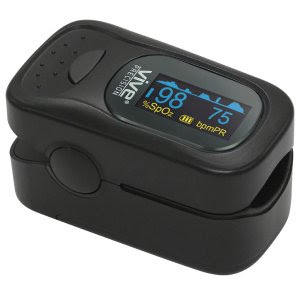3 Ways to Reduce Inflammation and Reduce Heart Disease Through Diet

Cardiovascular disease and breast cancer are the two leading causes of death in the United States for women. Both are associated with inflammation.
Strategies to reduce inflammation may be an effective treatment option to reduce cardiovascular disease and breast cancer.
Chronic inflammation leads to the release of inflammatory cytokines. These inflammatory cytokines contribute to cellular damage, which leads to disease onset or progression. Chronic diseases such as atherosclerosis, osteoporosis, and diabetes all have an inflammatory component.
There are medications to reduce inflammation, such as steroids and non-steroidal anti-inflammatory drugs (NSAIDS), but all medication comes with side effects and these are no exception. Potential side effects include nausea, constipation, diarrhea, headache, dizziness, weight gain, increase blood pressure, and immune suppression among others.
Alternate treatment options are desirable for treating inflammation, such as dietary interventions. Improving dietary quality with emphasis on specific anti-inflammatory nutrients is a safe strategy for reducing inflammation and disease risk.
A diet to reduce inflammation is low in added sugars, contains omega-3 fatty acids, and rich in dietary fiber.
Foods high in added sugar that should be avoided or limited include soft drinks, energy drinks, sports drinks, cakes, pastries, donuts, fruit drinks, ice cream, pudding, cookies, candy, pie, and cobblers.
Benefits of Hydrotherapy
 For centuries, water has been used as a treatment for a wide range of ailments. Today, hydrotherapy is still used as an important healing tool – leading people to seek relief from saunas, hot tubs, and even just at home in the shower or bath. Not only does water help cleanse the body and remove harmful toxins, the healing benefits of hydrotherapy can offer a natural solution to address a variety of health concerns.
For centuries, water has been used as a treatment for a wide range of ailments. Today, hydrotherapy is still used as an important healing tool – leading people to seek relief from saunas, hot tubs, and even just at home in the shower or bath. Not only does water help cleanse the body and remove harmful toxins, the healing benefits of hydrotherapy can offer a natural solution to address a variety of health concerns.
No matter what kind of issues you’re struggling with, chances are hydrotherapy will be able to provide you with some relief – and if nothing else, the experience will certainly offer a boost of energy and promote healthy sleep. Before turning to pharmaceutical options to try and manage your health, try treating some of these problems with some water and steam. You might be surprised by how effective this treatment can be for virtually all kinds of ailments.
Pain relief
Whether you’re dealing with chronic pain as a result of a condition like arthritis or fibromyalgia, or acute pain due to an injury, hydrotherapy can provide significant pain relief. Hot water can help soothe the discomfort associated with these issues, and cold water can effectively decrease muscle spasms and inflammation. Many hot tubs and even some showers come equipped with jets that are strategically placed to massage sore muscles, providing further relief for many pain sufferers.
Improved heart function
Studies show that when patients with chronic heart failure are immersed in water, they show significant improvements in heart function – with no adverse reactions. This can be explained by a decreased heart rate, increased diastolic filling, and dilated veins and arteries – promoting circulation and even helping to lower blood pressure.
Hydrotherapy and water-based exercises are often suggested to patients who have suffered strokes or undergone heart surgeries to help them rehabilitate and get back on their feet. However, if you suffer from heart disease or any other cardiovascular issues, it’s best to talk to a doctor before attempting any kind of alternative therapy.
What is a Normal Blood Pressure by Age?
 High blood pressure, or hypertension, does not always present with symptoms. You may have high blood pressure and feel perfectly fine. That is why it is important to regularly monitor your blood pressure to ensure you are within normal levels.
High blood pressure, or hypertension, does not always present with symptoms. You may have high blood pressure and feel perfectly fine. That is why it is important to regularly monitor your blood pressure to ensure you are within normal levels.
Your blood pressure reading includes a top number and bottom number. The top number is your systolic reading. This is the pressure blood exerts against artery walls when the heart contracts or beats. The bottom number is the diastolic reading. This measures the force against your artery walls when the heart is relaxed or between beats.
Your blood pressure will fluctuate throughout the day depending on changes in posture, stress, sleep, and exercise. Regardless of fluctuations, your blood pressure on average should remain less than 120/80 mm Hg.
Here are blood pressure categories as defined by the American Heart Association.
Normal blood pressure: <120 / 80 mm Hg
Prehypertension – 120-139 / 80 -89 mm Hg
Stage 1 High Blood Pressure – 140-159 / 90-99 mm Hg
Stage 2 High Blood Pressure – >160 / 100 mm Hg
Hypertensive Crisis – >180 / 110 mm Hg (seek emergency care)
Prehypertension increases your risk for developing high blood pressure. If you have prehypertension, this is an ideal time to assess your diet and lifestyle choices and implement changes to lower levels. Continue reading
10 Heart Health Facts and Myths

Much of what you think you know about high blood pressure, or hypertension, may be based on outdated information. “You may think, for example, that being diagnosed with prehypertension isn’t a big deal, especially if you’re in your 20s or 30s. You may feel fine. But we’re now learning that even slightly elevated blood pressure over a prolonged time can have serious consequences.
Felicia Stoler, DCN says science is evolving so quickly that it’s sometimes difficult to keep up with what we should and shouldn’t be doing to manage our health. Research on blood pressure is no exception. Here are the ten common myths Stoler hears most frequently.
Myth #1: Blood pressure in the 120/80 range is ideal.
Fact: “Just as over the years, health experts have dropped the acceptable limits with respect to cholesterol and blood sugar, the same is now happening with blood pressure. Experts are re-thinking what’s healthy. Too many people who have blood pressure in the 120/80 range are developing heart disease. What’s more: we’re discovering that young people are at greater risk for developing heart disease later in life than we once thought.
“The CARDIA study, conducted by researchers at multiple locations including Johns Hopkins University, Northwestern University, University of Minnesota and the National Heart, Lung and Blood Institute, followed nearly 2,500 healthy men and women from early adulthood (ages 18 to 30), for 25 years. The results revealed that those whose blood pressure was in the prehypertension range – between 120/80 and 139/89 – while they were still under 30, were more likely to have signs of heart disease when they reached middle age. Specifically, they were at higher risk of developing problems with their heart’s left ventricle.
“Results of the SPRINT study were presented at the American Heart Association annual meeting. In that study, about 9,300 participants were seen regularly for four to eight years by blood pressure management experts. Researchers determined that maintaining blood pressure below the commonly recommended systolic target of 120 significantly reduced rates of cardiovascular disease and lowered the risk of death among adults age 50 and older diagnosed with high blood pressure. As a result of this study, the American Heart Association now suggests that blood pressure of 120/80 is the new lower limit for hypertension.”
Myth #2: You’ll notice symptoms if you have elevated blood pressure.
Fact: “That’s the challenge with high blood pressure as well as high cholesterol. There may not be any noticeable warning signs, or they may seem so insignificant that you just ignore them. That’s why high blood pressure is often called the silent killer. For example, some people with high blood pressure may get headaches but attribute them to stress. Left unmanaged, high blood pressure can affect your overall health. That’s why even eye doctors and dentists will check your blood pressure during your appointments.”
Continue reading
Home Oxygen Saturation Monitor: A Review

What is a pulse oximeter?
A pulse oximeter is a device used to indirectly measure blood oxygen saturation. The body regulates oxygen saturation precisely for a specific balance of oxygen in the blood.
What are normal oxygen saturation levels?
Normal pulse oximeter readings for oxygen saturation range between 95 – 100 percent. A saturation level between 90 – 95 percent would be considered low, but does not necessarily indicate a health concern. A blood oxygen saturation level below 90 percent is considered low.
Who should monitor oxygen levels at home?
A pulse oximeter provides safe, non-invasive monitoring of the cardiorespiratory condition for patients who warrant monitoring, such as patients with chronic obstructive pulmonary disease.
Pulse oximetry is also used in high altitudes, such as mountaineering as a red flag for impending altitude sickness and pilots who can experience hypoxia at high altitudes.
Oxygen saturation can be comprised in children with asthma or wheezing and may warrant home monitoring. Pulse oximetry has also been used to determine appropriate treatment methods for individuals with venus leg ulcers and diabetics with vascular disease progression.
Discuss with your doctor to determine if monitoring home oxygen levels would be beneficial for your situation.
What should you look for when selecting a home pulse oximeter?
5 Health Boosting Activities for Bored Adults
Guest post provided by Jessica Hegg. Jessica Hegg is the content manager at ViveHealth.com. Interested in all things related to a healthy lifestyle, she works to share valuable information that aims to improve the quality of life for others.
 If you’re like many other adults in the US, you probably spend a lot of time on the weekends bored – lounging around the house, watching TV, and generally puttering around. While that can be fun for a bit, extended periods of inactivity are unhealthy – both mentally and physically.
If you’re like many other adults in the US, you probably spend a lot of time on the weekends bored – lounging around the house, watching TV, and generally puttering around. While that can be fun for a bit, extended periods of inactivity are unhealthy – both mentally and physically.
So why not kill two birds with one stone? There are plenty of fun, healthy activities to take part in that aren’t overly stressful, but can still be entertaining and lead to better health outcomes.
It’s been found that 300 minutes (5 hours) of light physical activity per week leads to an overall lower risk of all-cause mortality, as well as helping to prevent a whole host of maladies such as colon and breast cancer, coronary heart disease, high blood pressure, stroke, and type 2 diabetes, among others.
In addition, a higher level of cardiorespiratory fitness and muscle tone is observed. Simply put, being active makes you healthier, makes you feel better, and makes you look better. So take a look at these easy, fun activities, and plan your next weekend outing or weeknight recreation accordingly.
1. Sports Clubs
Recreational leagues in sports like basketball, soccer, and softball are readily available throughout most cities in the US, and most cater to adults by age group, so you won’t have to deal with being stuck in a hyper-competitive league with some 25-year old.
Playing a sport in a team environment is entertaining, fun, and good for you. This is especially great for people who usually don’t like to exercise that much – the fun, supportive team environment is sure to get you up and moving.
Sports like racquetball and squash are also very popular among adults – they don’t require too much-specialized equipment, and you don’t need to sign up for a league, just find a partner or two who you can play with a couple times a week.
2. Gardening and Yard Work
Gardening and yard work are fantastic ways to burn calories, occupy your day, and get some great results – not just for your health, but for your curb appeal!
Continue reading



